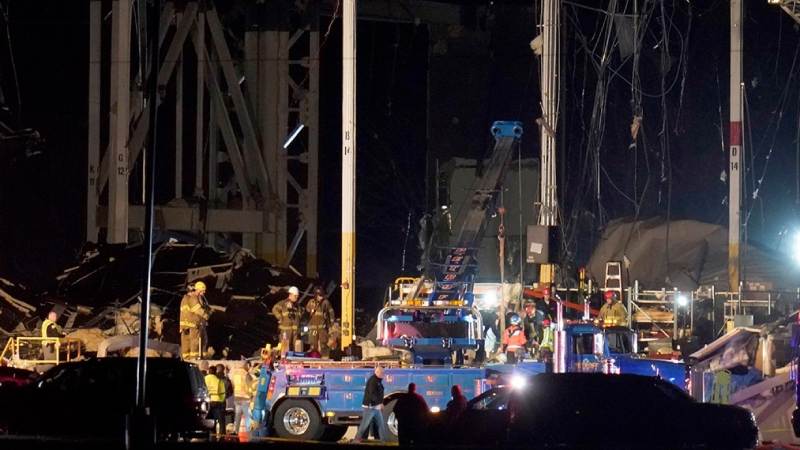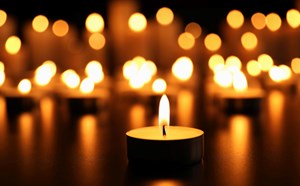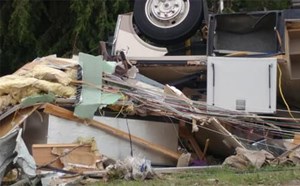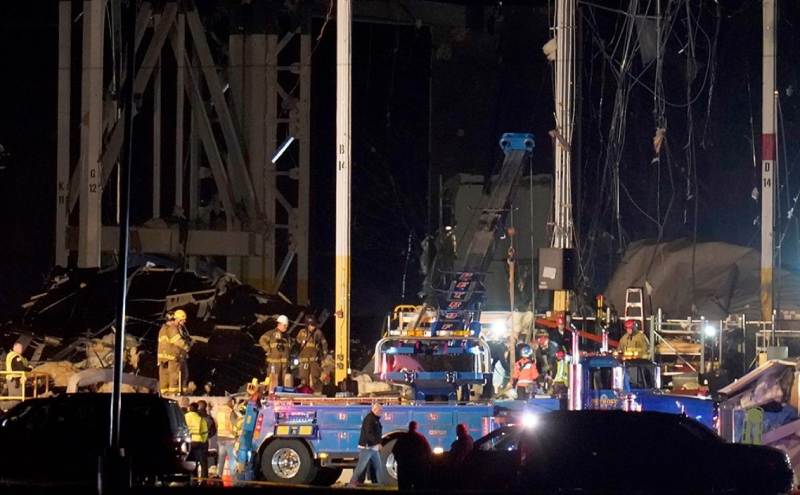
Controlled Chaos to Uncontrolled Chaos – Tornado Fallout
Writer Lucinda Millsom interviews Dr. Rebecca Tracy, Assistant Professor of Emergency Medicine - Division of EMS, Southern Illinois University School of Medicine about the December 2021 Edwardsville, Illinois tornado disaster that killed six Amazon warehouse workers. Lucinda Millsom is a medical student who has completed her 3rd year clinical rotation at Swedish Covenant Hospital, Chicago, Illinois.
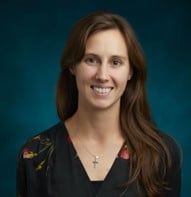
Dr. Rebecca Tracy, DO
In December 2021, six Amazon warehouse workers died in Edwardsville, Illinois after a tornado destroyed most of the warehouse. Dr. Rebecca Tracy, DO, Assistant Professor of Emergency Medicine, Southern Illinois University School of Medicine, was on call as an EMS fellow at Washington University in Saint Louis at the time when some 50,000 pounds of concrete wall folded in on its occupants.
By the time I got there, 45 people had been cleared from the building and we only had one live patient. At this stage, there had been portions of the destroyed warehouse that had not been searched yet because the structural engineers had not cleared them for the search dogs to go through. So, our immediate focus was on that one live patient.
Our patient was face down, pinned under one of the large pieces of concrete. We could see from his right shoulder and up half of his face. He was able to talk to us and tell us what he could feel. He couldn’t shimmy out or move to us at all. We had enough to know that he had at least the potential to have significant crush injuries.
We didn't see any visible bleeding, any hemodynamic signs of shock, but we were not sure if there were any other long bone or pelvic injuries. Hypothermia became a concern as well because we had to use a lot of water to cut the cement around him. Most of our treatment was focused on crush injury management, hydration, monitoring and preparing to give calcium and bicarb if needed. As soon as the crane lifted the concrete piece, we slid him on to a Stokes basket and into an ambulance. The paramedics, my co-fellow and I stripped him of all his cold, wet clothing and covered him with blankets.
While he was under the concrete, we had a pulse oximeter so we could obtain a heart rate and O2 saturation, but we couldn’t get any ECG leads or a formal three-lead to take a look at any rhythm issues. So, once he was out, we got him on the monitor, dried him off, and got an additional IV access and a cursory FAST exam to look for any obvious signs of internal bleeding. Amazingly, he was still in great spirits.
Ultimately his injuries were an acetabular fracture, a left thumb fracture and multiple lacerations and bruises on the left side of his body.
How important is teamwork with the other EMS staff/local community and authorities during the collapse and in coordinating the response?
In the pre-hospital space, there are well-defined roles so whether you are part of a heavy rescue crew, FEMA Urban Search & Rescue team or some other specialized team, everyone has a job that's assigned to them. Anyone not part of a specialized team is waiting to be told by command where to stage or where there is a place safe to work. In this case if you didn’t have a helmet, you were waiting where the ground was clear or staged to keep enough space for easy transport to and from the scene. It's important for there to be that structure to keep responders safe.
What is the role of an EMS physician in a mass-casualty event?
Well-run systems set paramedics up to have a lot of decision-making power, and we [EMS physicians] were mostly there to continue to empower their decision-making. It's mostly to validate the “sure this is a little bit different than our average everyday situation” and the occasional out-of-scope procedure, but most of the time the answer is “yep, you’re doing exactly what you’re supposed to be doing.” We're sometimes just there more to help with the 30,000-foot view coordinating agencies from multiple areas, the multiple hospitals we can go to, and how to help not have spill-over of the chaos into these other places.
What should EM physicians do?
Know your system plans - having them in place, being aware of your hospital’s capacity and your ability to manage a surge.
COVID was a very slow-moving disaster. With this situation, there is only a short warning period that unfortunately ERs more and more have to contend with as any surge of patient’s can become a sort of “disaster” if your resources are overwhelmed.
Whether it's building collapses, active shooter alerts at offices or schools, and unfortunately sometimes at hospitals, having disaster or surge plans in place is important because whether we're dealing with weapon inflicted injuries or a natural disaster, we need to know how to scale up. While we [Emergency Physicians] may not think of ourselves as disaster specialists, we’re all going to be involved if and when they happen.
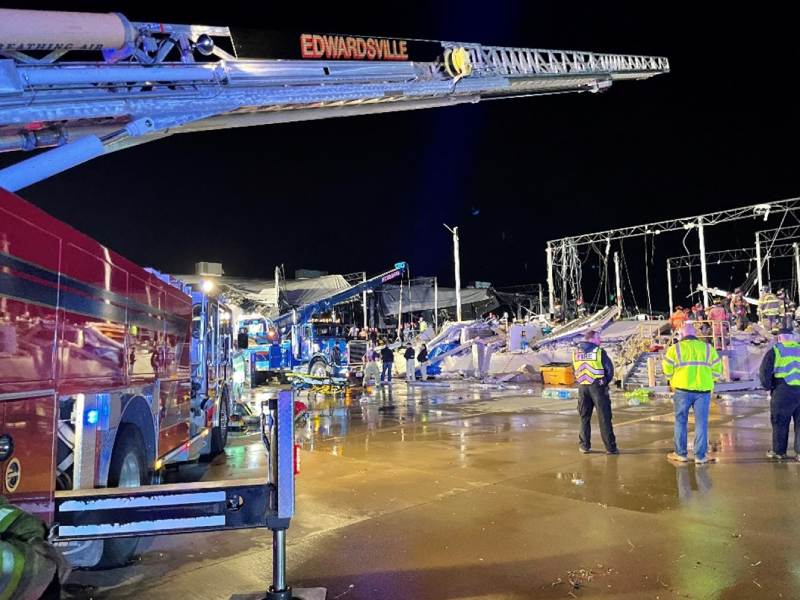
How did you cope with the event aftermath?
It was very surreal to see other people talk about it in the days afterward. Seeing death outside the hospital is different than death in the hospital. We have some expectations of what happens when we run a code in a hospital; we're used to feeling like there's something we can do and maybe sometimes we take that feeling for granted.
We're all going to have some event that we consider traumatic or disastrous and it doesn't have to be a building that falls down - we see things every day that are not everybody's every day.
Different patients hit you differently and it's important to make sure that you've got people to reach out and talk with when it happens.
What did you learn from the experience?
In the emergency department you're used to some level of controlled chaos, and this is uncontrolled chaos.
No matter how many times you practice [for an MCI event], you're probably not completely prepared. It's important to find where you are most useful and it may not be the thing that you think you need to be doing, but what is best for the event as a whole as it's happening. You need to know where you are and what you're doing, or you’ll end up a patient too.
Why did you pursue disaster medicine?
I got into EMS as an educator. Education is something that translates anywhere; it has more permanence. Teaching and education is something that you can bring anywhere, and I wanted to help continue to provide it to our paramedics and first responders. I thought fellowship was a great experience - it really helped with the 30,000-foot view and I learned a lot about system design and some of the politics of EMS. This particular event really highlighted the importance of having EMS physicians within a system and showed me a how to apply both emergency medicine and EMS system knowledge together to help bring the best care possible to a difficult situation.
